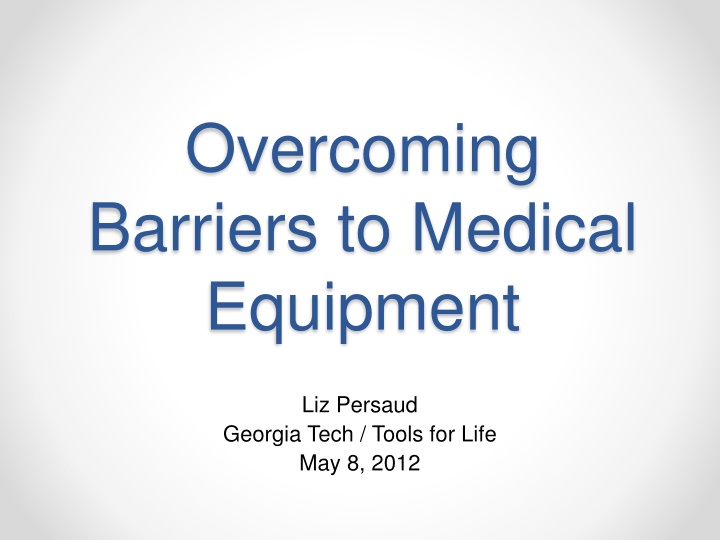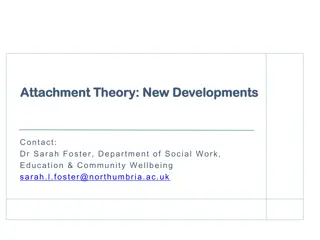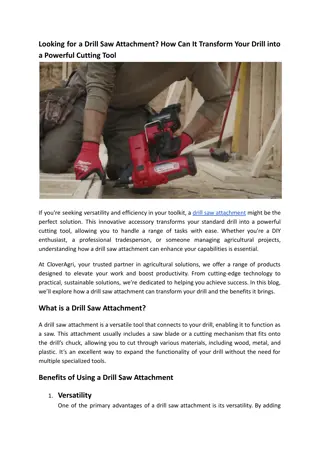
Overcoming Barriers to Medical Equipment for Muscular Dystrophy and Spinal Muscular Atrophy Patients
Learn about the challenges faced by individuals with Muscular Dystrophy and Spinal Muscular Atrophy, including accessibility and attitudinal barriers in medical settings. Discover recommendations for improving accessibility and attitudes, along with insights on the importance of accessible workout equipment for individuals with disabilities.
Download Presentation

Please find below an Image/Link to download the presentation.
The content on the website is provided AS IS for your information and personal use only. It may not be sold, licensed, or shared on other websites without obtaining consent from the author. If you encounter any issues during the download, it is possible that the publisher has removed the file from their server.
You are allowed to download the files provided on this website for personal or commercial use, subject to the condition that they are used lawfully. All files are the property of their respective owners.
The content on the website is provided AS IS for your information and personal use only. It may not be sold, licensed, or shared on other websites without obtaining consent from the author.
E N D
Presentation Transcript
Overcoming Barriers to Medical Equipment Liz Persaud Georgia Tech / Tools for Life May 8, 2012
Medical Diagnosis Muscular Dystrophy, Spinal Muscular Atrophy Type 2 Progressive neuromuscular/neurodegenerative disease Curvature of the spine (spinal fusion at 9 years old) Long-term Progressive muscle weakness Everyday effects: o Muscle and joint pain o Muscle fatigue o Rely on physical assistance for transferring, bathing, dressing, eating, and transportation
Defining the Barriers There are 2 main barriers that I encounter during doctors visits and medical procedures: 1. Accessibility 2. Attitudinal
Accessibility Barriers 1. Check-in at reception area 2. Scale 3. Exam room table 4. Procedures Mammography and X-ray machine 5. Check out
Accessibility Barriers Transferring in and out of wheelchair Cannot be transferred without transfer lift too painful and dangerous Bring my own transfer sheet whenever I go to doctor s visits, ER visits or to medical procedures.
Attitudinal Barriers Attitudes are the Real Disability. I do not think about my Disability until I encounter somewhere I can not access or someone who focuses on my weaknesses. Equal treatment Strong focus on my Life Expectancy Often denied tests in a casual manner
Recommendations Check-in/check-out counters should be crenulated to accommodate wheelchair height and various other needs More space in exam room (not enough room for power wheelchair, attendant, doctor, nurse, exam table, chairs, etc.) Accessible exam table and diagnostic machines (easily accessed with a transfer lift and be used while lying down) Disability Awareness training
Suggested Next Steps Accessible Workout Equipment! If workout equipment was accessible and easy to access by individuals with various abilities (from a wheelchair) more people with disabilities would be inclined to exercise. Assisting in preventative measures could decrease the amount of doctors visits and medical procedures. T h a n k Yo u f o r L i s t e n i n g !






















